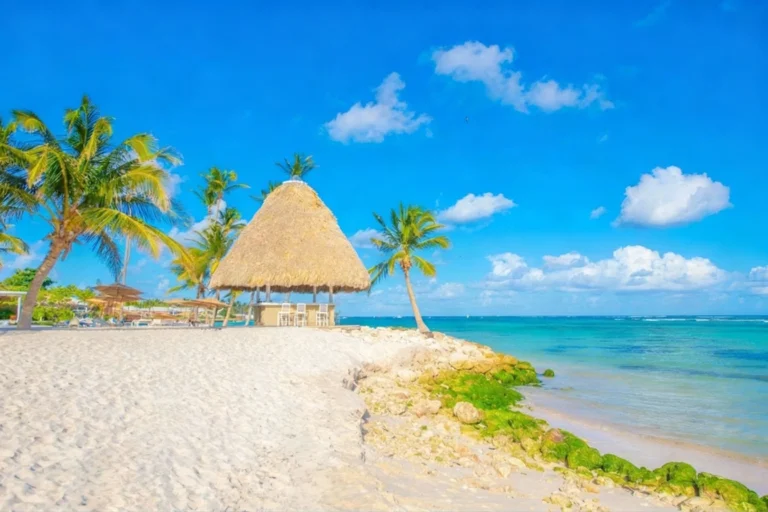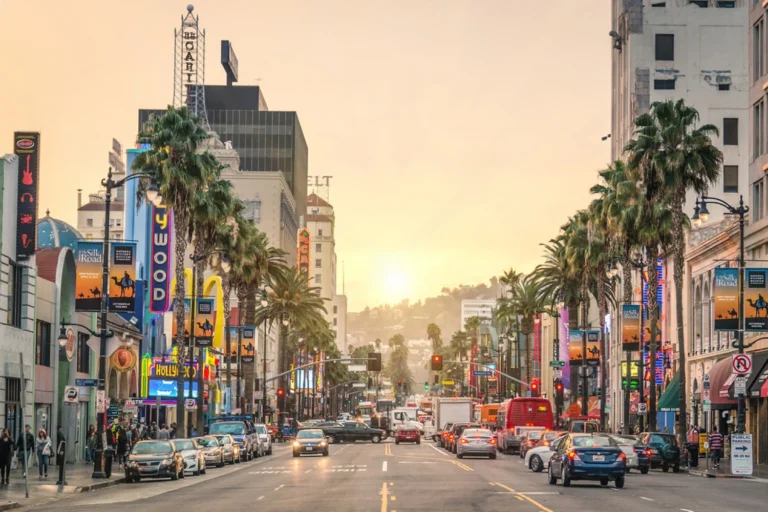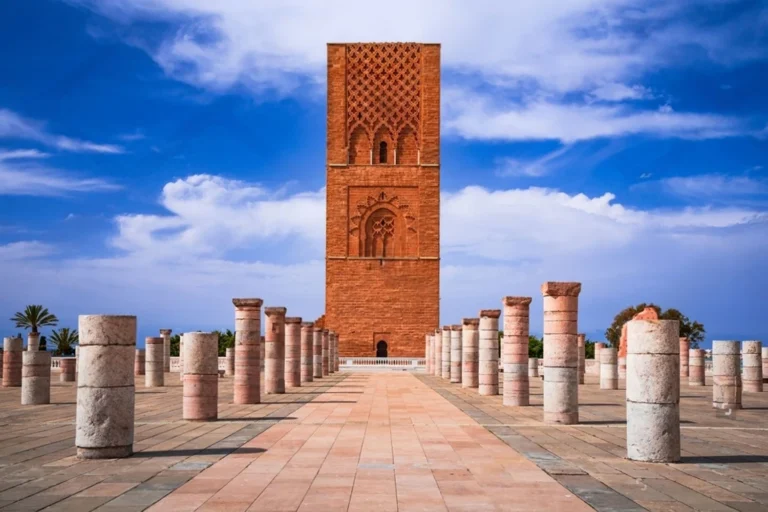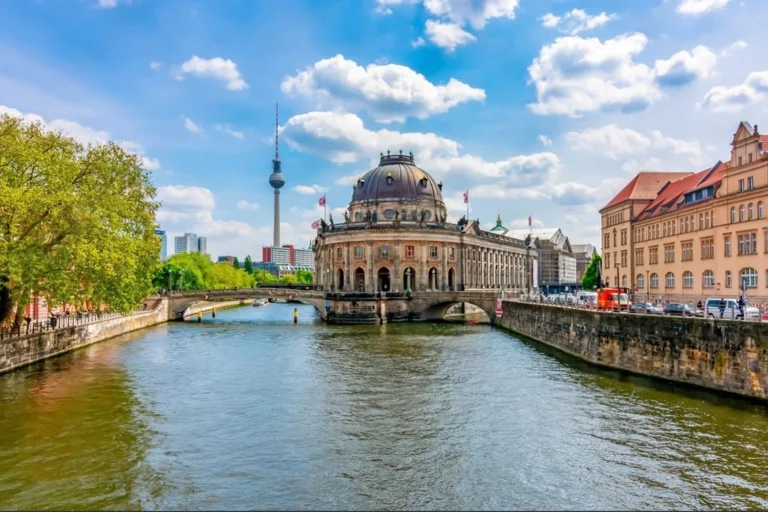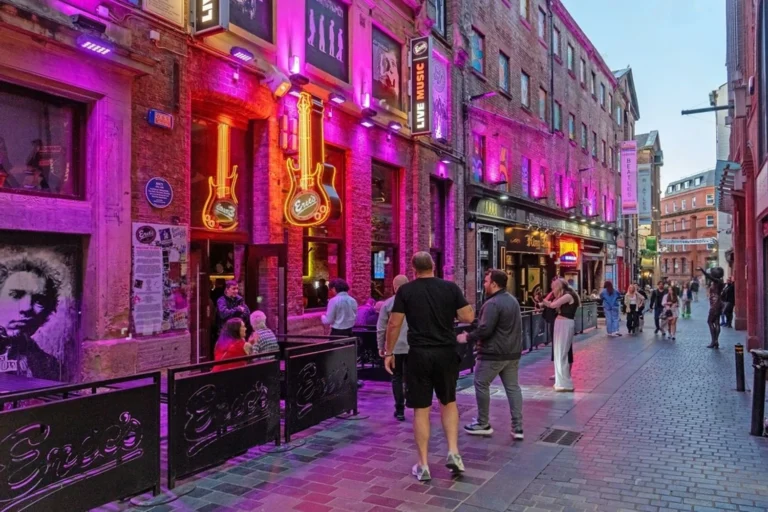Dominican Republic: 30 Surprising Facts Beyond the White Sands
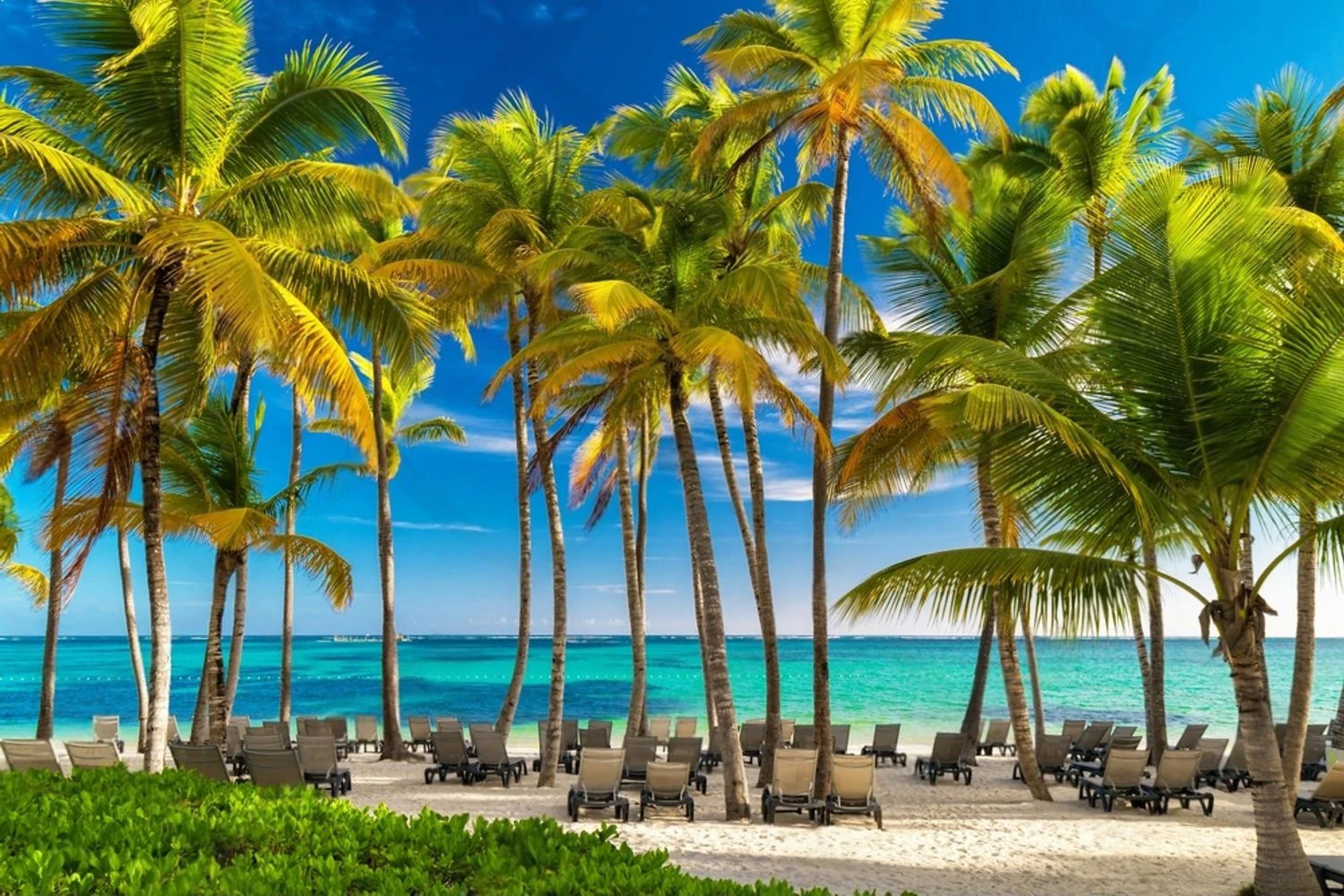
The Dominican Republic feels like sunlight that learned how to dance. The air hums with music and salt, and the breeze carries stories from both the mountains and the sea. Between the laughter in the plazas and the hush of palm leaves at dusk, there’s a rhythm that feels ancient yet alive. Stay long enough, and you’ll realize it’s not just a place – it’s a feeling that wraps around you, warm and unforgettable.
https://en.wikipedia.org/wiki/Dominican_Republic
A country so independent, it celebrates freedom twice.
I remember laughing the first time someone told me their favorite joke: “We’re so fiercely independent, we had to do it twice.” Then they said the years-1821 from Spain, 1844 from Haiti and the joke softened into something tender. It isn’t just punchline bravado; it’s the way a people hold two turning points in their pocket like smooth stones, rubbing them for luck and memory.
Both days rise with the same pride: parades cracking open the streets, brass blaring, the rasp of güira, the thrum of tambora, and merengue loud enough to lift your feet before your head agrees. Smoke from grills curls into the salt air, flags ripple in that fluttery red white blue, and abuelas clap in perfect time while kids smear paint across their cheeks. Across the Dominican Republic, the music feels like a heartbeat steady, bright, and impossible to ignore.
What I love most is how no one chooses between them; the joy doubles without diluting. Two dates, two stories, one through line of grit and generosity, as if the nation keeps two birthdays and makes a wish for everyone. It reminds me that independence isn’t only a history lesson it’s the everyday rhythm at domino tables, the laughter tossed between neighbors, the stubborn promise to keep dancing even when the wind changes.
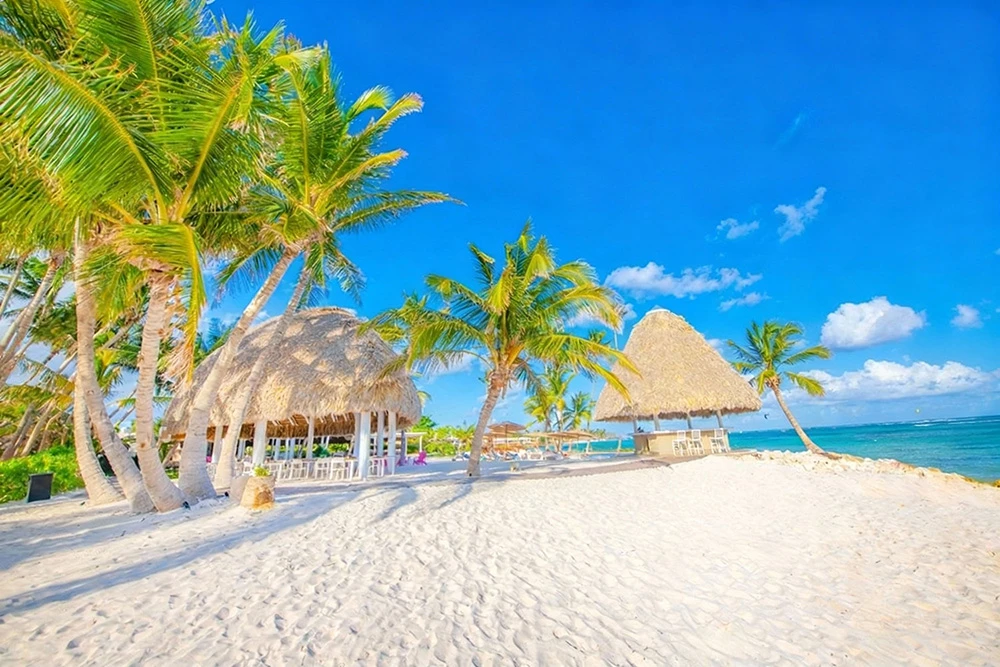
The only flag with a Bible at center
I remember a breeze in Santo Domingo tugging at the red, white, and blue, and someone whispering that this is the only country whose flag opens a book at its heart. On that tiny page it keeps John 8:32 – “And the truth shall make you free.” It felt tender and bold at once, like the country was steadying itself with a hand over its chest.
What I love most is how every schoolkid learns to draw it by memory before they can even read the verse. Chalk dust, pencil shavings, little ink smudges – the proportions of the cross, the curl of the ribbon, the open book – all learned as if truth and freedom are shapes your hands already know. There’s something beautiful in that: a promise sewn into the sky, reminding you that belief and liberty aren’t just words here, they’re practiced, traced, and carried from the first day you can hold a pencil.
Where the New World began, secrets still whisper
I didn’t expect a neighborhood to feel like the first draft of a continent. Within a few sun warmed blocks, the first university, the first cathedral, the first hospital, and the first fortress in the Americas seem to nod at one another. The air tastes faintly of limestone and late afternoon, and the bells fall softly over the cobbles, the kind of sound that makes you slow down and listen. I remember thinking how bold it was, to begin so many things in one place.
But then the other stories surface the underground tunnels said to run from the fort to the sea, cool and damp, carrying a breath of salt. People still talk about pirates and priests who vanished mid revolution, and you can feel the hush when they do. It’s the part no plaque can explain, the reminder that in Santo Domingo certainty and mystery live side by side. You leave with more questions than answers, and somehow that feels right for a city built on beginnings.
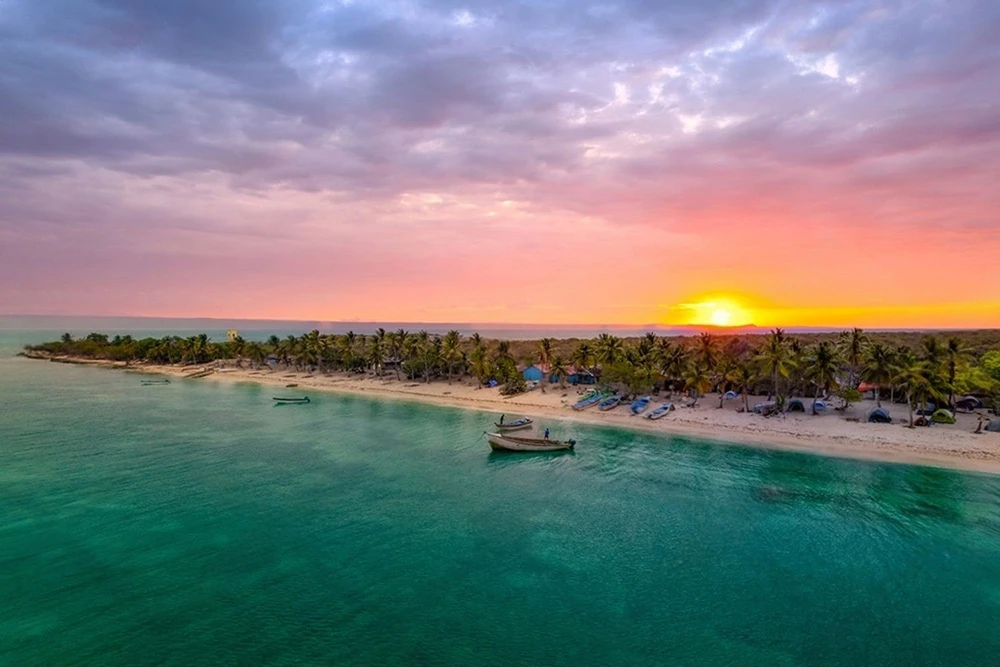
Taíno art older than Columbus, hidden in stone
It’s humbling how stone remembers what we forget. In the Taíno caves tucked into Los Haitises and around Bayahibe, the walls still carry drawings older than Columbus faces and spirals softened by centuries of breath and salt. I remember my voice falling to a hush without meaning to, the air cool and mineral sweet, a drip in the dark marking time, and that faint chalky smell that makes you feel like you’ve stepped inside a long, steady heartbeat.
Some of the petroglyphs rest so deep that explorers crawl through limestone tunnels to find them, which somehow makes their presence feel even more deliberate. I think of them as spiritual graffiti, left by hands that knew the tides and mangroves long before anyone wrote dates in a book. Standing there, the present feels wider, as if a door you didn’t notice has always been open an invitation to listen, not to look for answers, but to feel the quiet certainty that this land was loved and understood well before our stories began.
Centuries old devils dance toward forgiveness at dawn
I didn’t expect chaos to feel holy. February swells with drums, whistles, and the quick sting of a whip, and then the Diablos Cojuelos pour through, bright masks grinning, bells chattering. Angels chase and scold them, the crowd laughs and winces at once, and the air tastes of fried dough and rum while confetti clings to warm skin. In the crush, the street turns into a stage and everyone becomes part of the scene.
It’s been this way since the 1500s one of the oldest carnivals in the Americas and that deep history somehow steadies the noise. By sunrise, the devils are forgiven and the clamor softens; people breathe easier, shoulders drop. In La Vega, it lands as more than pageant: chaos, then catharsis, then a small, shared peace. I remember walking away lighter, forgiveness dusting my shoulders where the confetti had been.
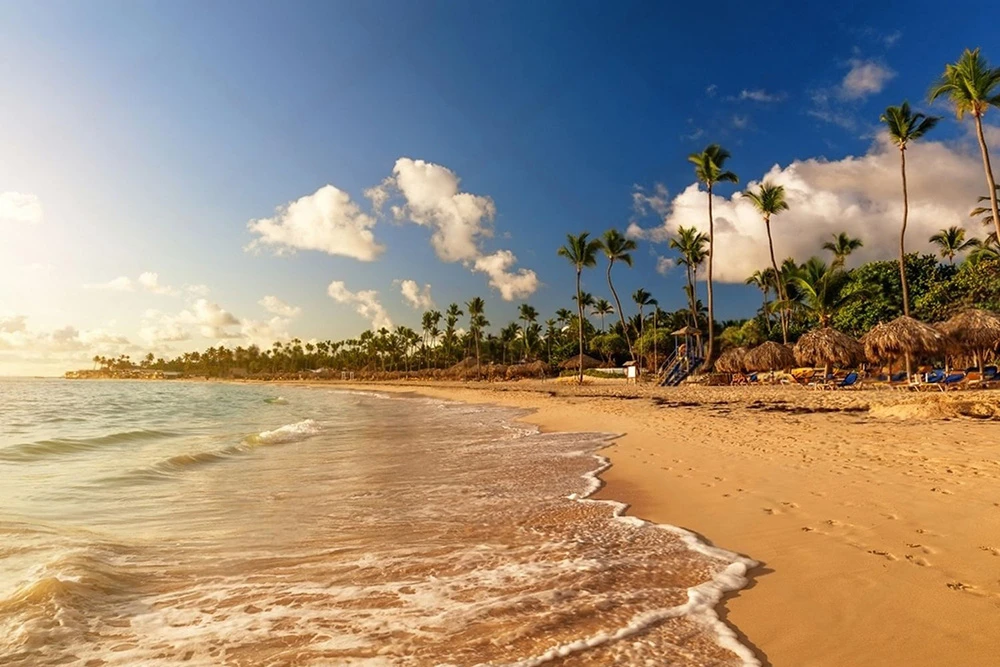
La Ciguapa, the backward footed whisper by the river
Dusk makes people honest, and that’s when her story comes out. They say she has long blue‑black hair and feet that point the other way, a trickster trail for anyone foolish enough to follow. The part that sticks with me is who she chooses: disrespectful men get led into the trees and lose themselves, like a warning braided into the forest.
Every river seems to claim her. In the Dominican Republic, I heard a dozen versions in one week each town swore she was seen by their bend in the water, just after the frogs tuned up and the air smelled like wet stone. I remember a quiet nod from a man at a colmado who said his cousin saw her once, and the way everyone around him didn’t laugh. Legends travel faster than cell service out there; they move on the breeze, along the banks, through people’s voices.
Maybe that’s why she endures: she’s a mirror held up to our manners, a reminder that the land hears how we speak to each other. Whether she’s real isn’t the point; the rivers feel older when her name is whispered, and you walk away a little softer, careful with your footsteps, careful with your words.
Mamajuana: Rum, roots, and a wink of magic
The first sip slides warm along the ribs, honey sweet then bark bitter, and someone always laughs before dropping the nickname: “Dominican Viagra.” It’s half dare, half joke, and the glass glows amber in the sun. I remember thinking the heat wasn’t a punch so much as a clearing – like the island clearing its throat.
In Santo Domingo, the older folks waved off the wink and swore by its patience: herbs to soothe, rum to carry, honey to soften. They said it could ease a cold, settle a stubborn stomach, even bless the doorway of a new house. The jar sits on a shelf with its roots sleeping at the bottom, topped up again and again, neighbors passing it around as if the recipe were a shared secret and the cure was community. I kept staring at it, this small altar in a bottle – part remedy, part rumor, all belonging.
Call it elixir or inside joke; here, not a drop goes to waste.
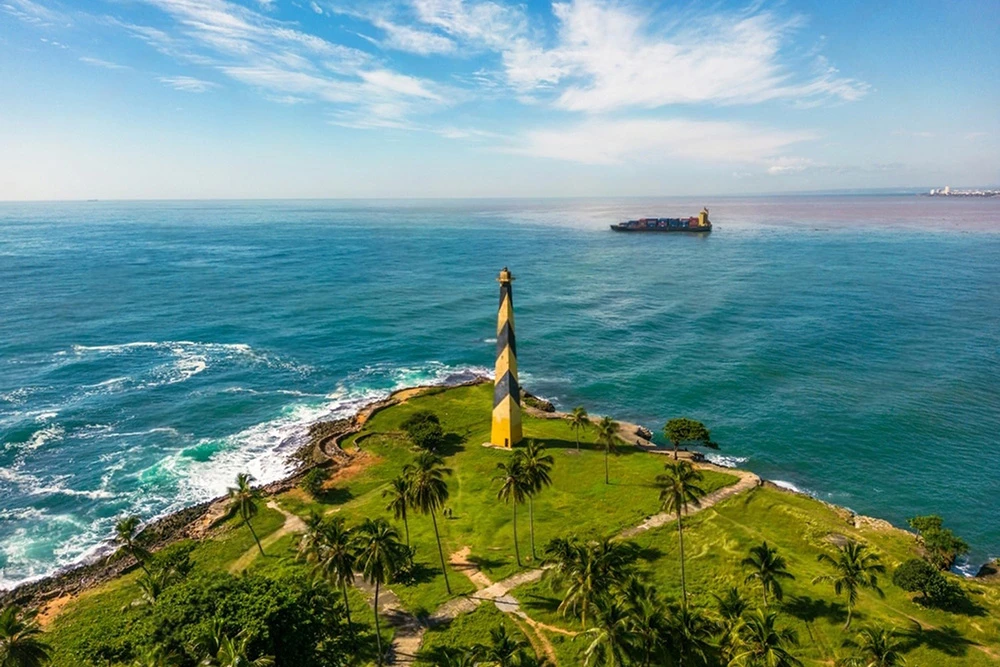
The flag you actually eat at noon
Around noon, steam and oregano drift from kitchen windows, and everything seems to gather around the table. They call lunch La Bandera Dominicana, the flag, and it really does look like one: white rice, red beans, and stewed meat set neatly side by side. People talk about it with a softness that feels almost sacred; skip it, and it’s a little like skipping prayer.
I learned to respect that plate in Santo Domingo, where the beans are warm with tomato and garlic, the rice sits glossy and calm, and the meat is tender with onions and oregano. There’s comfort in how ordinary it is, the kind of everyday habit that steadies the afternoon and makes room for kindness. It isn’t fancy, just honest and steadying, and somehow that’s the beauty everyone trusts.
Dominican duendes, guardians of socks, luck, and lullabies
I used to laugh about disappearing socks until an aunt in Santo Domingo lifted her chin at the night and said, “duendes,” like it explained everything. The radio hummed merengue from somewhere down the alley, and on the windowsill sat a shallow saucer of milk sweating in the heat. Somehow it felt kinder to imagine tiny hands tiptoeing through our lives, stealing a sock here, a shiny ring there, whistling just enough to make a baby wail and then hush.
People leave the milk “por si acaso,” because who wants years of bad luck over a forgotten courtesy? I remember loving that tenderness how a superstition becomes a small practice of hospitality, a way of telling the day, “You’re allowed your mischief, just be gentle with us.” Blaming the duendes turns annoyance into a smile, and the house feels less like it’s betraying you and more like it’s hosting old guests you can’t quite see.
That’s the island’s quiet genius, I think: making room for mystery alongside laughter. Luck here is as skittish as a stray cat, coaxed with a little sweetness at the sill. And when a bracelet slips away, someone just sighs, “duendes,” and the evening goes on crickets chirping, fans spinning, babies soothed as if the world works better when you leave the smallest bowl of mercy out for whatever wanders.

Touch clouds and sink below sea level in hours
I remember the air changing from pine cool to salt sweet in a single afternoon. Up by Pico Duarte, the Caribbean’s highest peak, the light felt thin and clean; breath came in little puffs, and the wind carried the smell of resin and rock. A few hours later, down at Lake Enriquillo, the heat turned close and heavy, the shore edged with pale salt and the air wavering in the glare. People there grinned and said you can touch the clouds and dip below sea level before the day is done. It sounds like bragging until you feel it in your bones.
What surprises me isn’t the distance so much as the shift in mood how one place can hold both the hush of high country and the slow hum of a sunken lake. The Dominican Republic wears its extremes easily, like pockets that hide a sky blue feather and a warm stone. Maybe that’s why the spirit here moves between big laughter and patient calm; the land teaches you to stretch without snapping. Two points a few hours apart, yet together they make a day feel wonderfully wide.
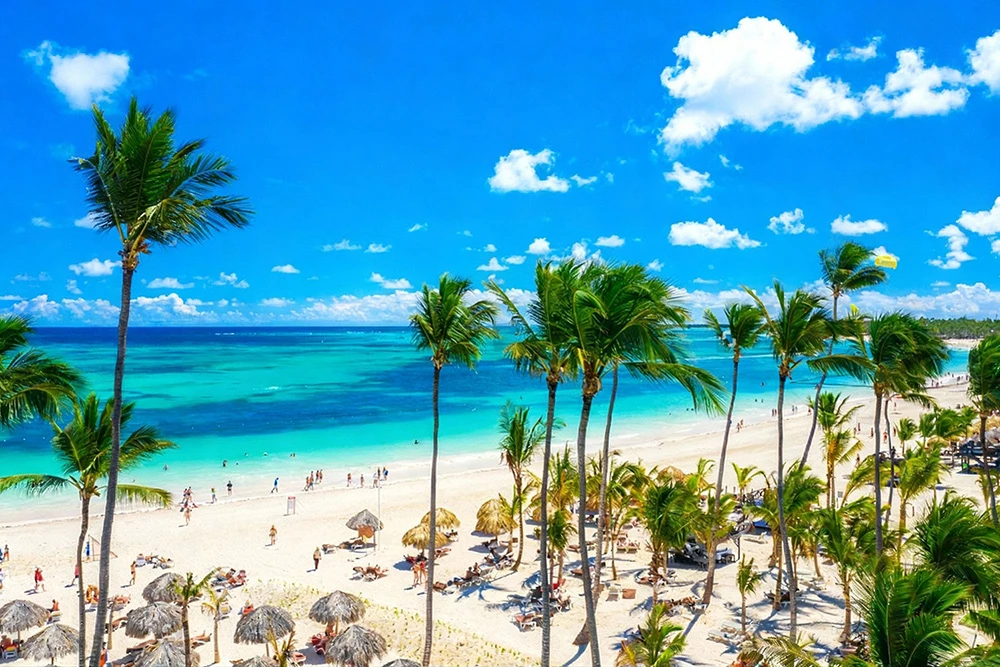
Where crocodiles and flamingos share a hush of bells
I didn’t expect stillness to feel this alive. Heat pressed on my shoulders, the air salted and light streaked, and along the shallows crocodiles lay motionless while flamingos moved across the water in pale pinks. Out by Lake Enriquillo, it felt like a truce signed in salt – danger and elegance keeping each other honest.
Fishermen here swear that when the wind shifts, you can hear church bells lifting from the depths. I remember going quiet, the breeze touching my face, and that faint sound made the place feel blessed and raw at once – like the world remembering its balance.
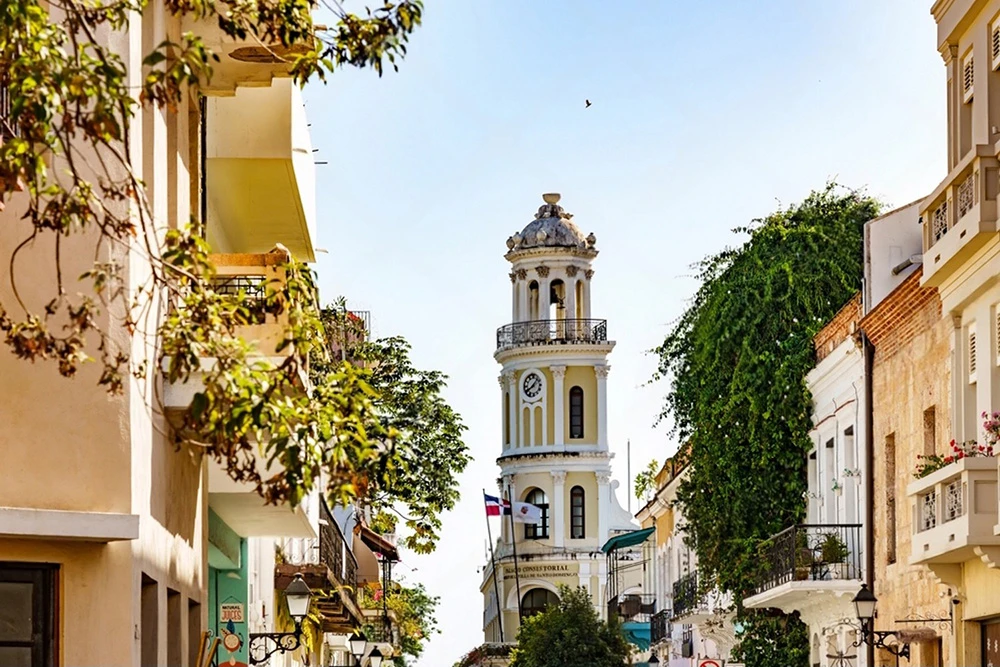
Where baseball is a faith with a bat
You hear it before you see it the snap of bottle caps against a stick, the gritty hiss of dust, voices rising into the heat. I remember pausing by a roadside lot with the sun on my neck and feeling the whole block thrum, steady as a heartbeat. Barefoot kids were reading the hops of those bottle caps like old friends, tree branches gripped with a seriousness that made the afternoon feel bigger.
People say this island turns out more MLB players per person than anywhere else, and it makes sense when you watch the way they play no uniforms, no fuss, just focus. In the Dominican Republic, the game is part of daily life: the smell of fried plantains from a corner stand, a radio call drifting from an open window, chalk dust soft on small hands. What surprised me most wasn’t the skill but the certainty, that quiet, shared belief that a dream can start on any street and still find its way under the stadium lights.
Amber that inspired dinosaurs, glowing like time’s quiet neon
I used to think amber was just warm honey until I wandered through the very fields that sparked Jurassic Park’s imagination in the Dominican Republic. In full sun it turns honey gold, rich and gentle, and I remember grinning, surprised that something so small can make the past feel close.
The real surprise is the rare blue amber. Under UV light it shimmers green, like bottled sunset suddenly switching to sea, a natural neon older than time. I went quiet; that tiny glow felt both playful and ancient, and the feeling stayed with me for hours.

Larimar, rare blue stone of storm washed shores
I still remember the morning after a storm the waves gentler, the sky newly clear, and the sand sprinkled with pale blue. They call it larimar, a gemstone found nowhere else on earth; near Barahona, the old story says it began as a mermaid’s tears turned to stone. Hearing that at the water’s edge felt natural, the kind of explanation that belongs to a place.
After heavy weather, locals still gather the tiny shards the waves leave behind, passing them palm to palm. I once held a piece, smooth and cool against my skin, its blue softly clouded like a small piece of sky. It made me think about how this coast endures storms and, in the quiet afterward, still makes room for wonder.
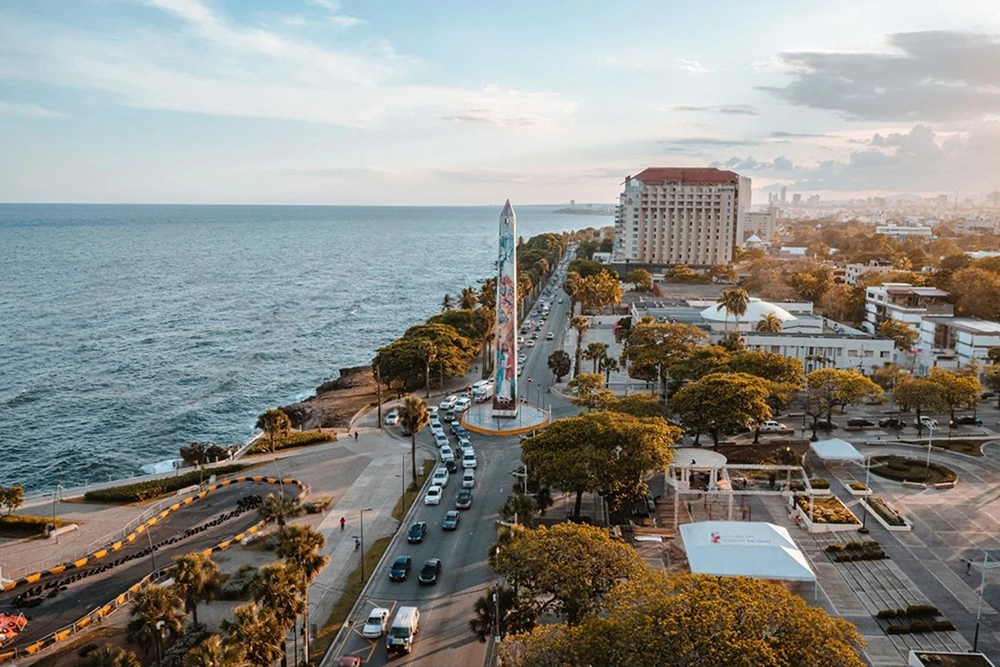
Where gravity seems to change its mind for fun
It’s the kind of spot that makes your brain laugh at your eyes. On a sun struck ribbon of road, a car in neutral will inch uphill as if the world forgot its own rules. I remember heat rippling off the asphalt, the sharp green smell of wet leaves after a quick mountain shower, and that fizzy, childlike flutter between a giggle and a gasp.
Scientists shrug and say optical illusion the horizon’s tilted, the slope is tricking you while locals grin and whisper brujería, and honestly both stories feel right. Everyone ends up wide eyed, trying to reconcile what they know with what they see, as if certainty itself were wobbling a little in the afternoon light.
Out near Polo in Barahona, the hills and the air have this gentle hush that makes wonder easy company. What I loved most wasn’t the stunt, but the permission it gives to be amazed no explanations necessary, just the sweet, stubborn feeling that the world can still surprise you and get away with it.

Ugly but blessed: the island’s rare venomous neighbor
I remember the hush at dusk, when the leaves clicked like tiny shells and something small nosed the world open. The Hispaniolan solenodon isn’t much to look at shrewish face, whiskers like bent wire, a little sway to its gait but it carries venom, one of the very few poisonous mammals on Earth. People speak of it with a grin and a shrug, calling it “ugly but blessed,” and somehow that felt exactly right, like a nickname given out of affection.
Here on Hispaniola, the strangest creatures are the ones that made it through the long thinning of life. The solenodon feels stitched from leftover night, musky and quiet, a survivor that refuses to apologize for its oddness. In the warm air, with a bit of salt drifting in from somewhere unseen, I caught myself softening to it the way you do to a stubborn relative annoying to some, but undeniably part of the family story.
What moved me most was that amused respect locals carry, as if the island learned to love whatever endured. Beauty isn’t the point here; blessing is. And the solenodon, this living typo the island kept on purpose, reminds you that being welcome and being pretty are not the same thing.
Cinnamon stirred pride in Dominican mountain morning coffee
I still smile at how sure everyone was: “Ours is the best,” said with that easy warmth that makes you want to believe. The first sip made their case deep, smooth, with a quiet sweetness like dark honey. Then came the local secret: a slim stick of cinnamon pressed into my hand. Stir with this, not a spoon. The bark tapped the cup with a soft wooden note, and the steam turned sweet spicy, as if the morning had decided to wake gently.
Up on those cool slopes where coffee shares the hills with cacao, you can taste the neighbors a little chocolate hush rounding every mouthful. It felt like the Dominican Republic in a cup: generous, sure of itself, unhurried. People there will swear their coffee is the world’s best; after that cinnamon stirred dawn, I didn’t argue. I just let the cup do the talking.

Prison walls that refused to be silenced
I didn’t expect color to sound this loud. Sun catches on chipped cobalt and rust red swirls, and the heat off the concrete carries a faint chalky smell. You can feel the hush of the street bending around the painted stories, like the town is giving them room.
Inmates painted these murals – raw, colorful, political – and for a while the government tried to wipe them away. But travelers fell for them, locals did too, and public love stopped the scrubbing. The walls are now protected heritage, which still surprises me every time I stand there.
What gets me is how art born in confinement gave a whole place its say. It shows what courage looks like on an ordinary street, and why, in Salcedo, pride can be as simple as paint that no one is allowed to erase.
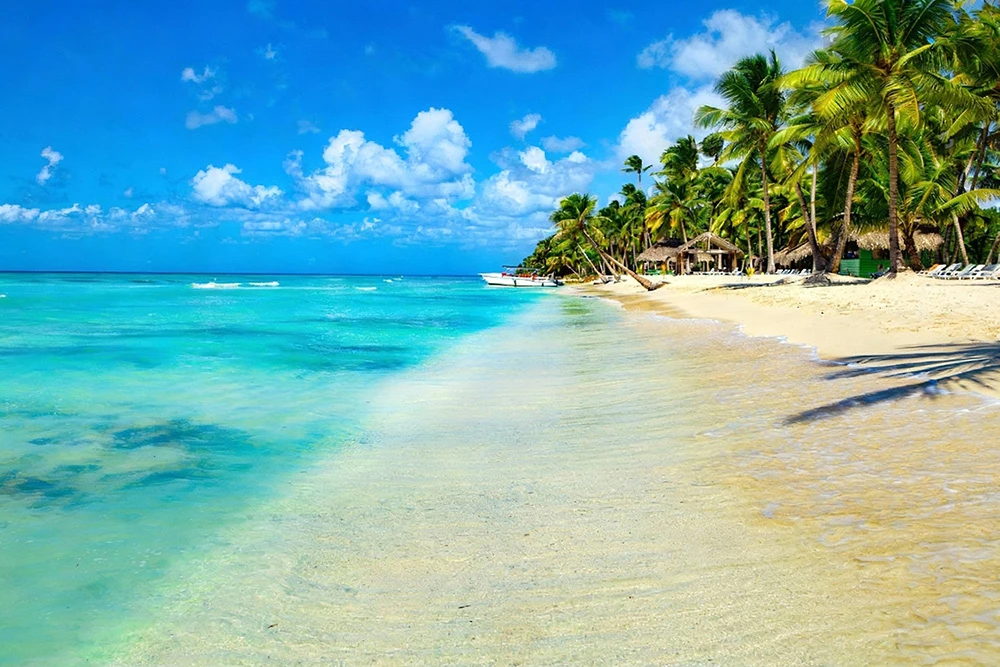
Decoding the Many Meanings of Dominican Honks
At first, it felt like chaos beeps ricocheting through warm air, motorbikes humming, the smell of fried plantains and gasoline hanging low. In Santo Domingo, a single tap can be hello, two taps mean I’m slipping by, and three? Brace yourself, cariño. Driving here doesn’t apologize; it chats. The street speaks in short notes, and somehow everyone answers right on time.
I remember sitting in the backseat, palms a little damp, until the rhythm started to make sense: a one beat greeting, a two beat intention, a three beat warning. Locals swear it’s more musical than reckless, and depending on who you ask, that’s either gospel or a grin with a shrug. But it does feel true more merengue beat than mayhem, the city choosing rhythm over rage, a quick kindness disguised as noise.
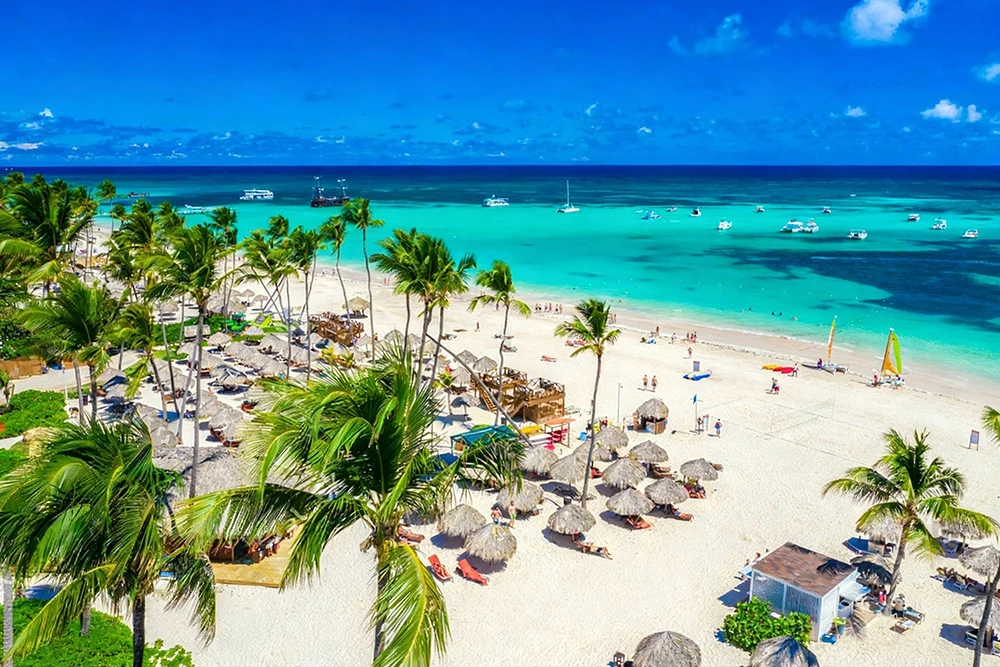
Holy Week’s devils dance with fire each year
I didn’t expect courage to sound like a crack of flame in the dark. The air smelled of smoke and salt, and the heat licked my shins while drums found that steady heartbeat everyone seems to share when the night starts listening. Kids leaned in at the edge of the street, faces glossy with wonder, and I remember thinking how fear and thrill sometimes hold hands.
In Cabral, they call them the Devils of Fire, and during Holy Week they whirl through the lanes with burning whips – a ritual that once defied colonial power, kept outside the gates and told to hush. Now it roars. Sparks fell like brief stars, masks flashed, and the crowd answered with a hush that felt like respect more than restraint. You can feel the history in the way the dancers stamp, not to scare, but to be seen.
What stays with me is how each year the brightness isn’t only in the flames; it’s in the people who gather, proud and steady, making room for the past without letting it swallow the present. The tradition doesn’t fade or soften; it grows more sure of itself, a reminder that joy can carry old stories safely, and that even a whip on fire can speak of freedom without saying a word.
Eggs in the air, Christmas on the way
There’s a moment when the streets turn bright and ridiculous, and you can’t help but laugh. In San Andrés, the start of Christmas isn’t lit by fairy lights first it’s announced by the wet pop of eggs against old stone and the high squeals of kids pelting cousins and brave uncles for luck. Yolks bloom like tiny suns on the cobbles, and the whole block feels looser, kinder, as if we’ve all agreed to start fresh.
I remember my cheeks aching from smiling while blessings were shouted over the racket, raw egg tang mixing with cinnamon drifting from someone’s window. Crushed shells stuck to our shoes like confetti, and sticky palms became a kind of handshake, a messy vow that we’d carry good fortune together.
It’s such a beautiful kind of chaos nothing polished, everything sincere. You leave the day speckled and laughing, and somehow it makes sense that the season begins this way: with a playful sting, shared noise, and the stubborn hope that next year will be kinder.

Where grief dances in bright Caribbean colors
I didn’t expect a resting place to glow like that. The walls were brushed in turquoise, mango yellow, and cotton candy pink, the sun catching on the paint until the whole block felt awake. A neighbor told me, half laughing, that their dead prefer joy to gloom, and I swear you could feel the idea settle in the air like a blessing.
Once, in Santo Domingo, I heard a funeral fold into merengue – the tambora cracking, the güira scraping, feet keeping time. The graves stood like a parade frozen in place, while the living clapped and cried in the same breath, letting tears and laughter share space. It taught me that here mourning doesn’t silence love; it just changes tempo, so the goodbye sounds a little like life.
A drink that makes the heat feel hopeful
Some afternoons are so hot the air barely moves, and someone slides you a glass of soft, pale orange. They call it Morir Soñando – to die dreaming – a silky mix of milk, sugar, orange, and ice that leaves a crescent of froth on your lip and the clink of cubes like tiny bells. People sip it slowly, swearing it makes the heart hopeful and the heat more forgiving. I believed them the first time; it felt like a small truce between the sun and your pulse.
What gets me is how it shouldn’t work: milk and citrus aren’t meant to mix, yet they settle into something bright and creamy. Once, on a shaded corner in Santo Domingo, I tasted that gentle contradiction and felt myself slow down, less hurried, more open. Maybe that’s the secret in this favorite glass – the reminder that even on the fiercest days, there’s room for softness, and a little hope can cool more than your throat.

An ancient rhythm that refuses to fade
The first thing I felt was the drum, low and warm, traveling through my ribs like a heartbeat. Bells flickered, maracas hissed, and voices rose in those call and response waves that make strangers smile at each other. The brotherhood of Los Congos del Espíritu Santo moved in their white shirts and bright sashes, and the air smelled faintly of wax and dust, like a patio before a celebration.
Their songs reach back to enslaved ancestors, braided through time with patience and stubborn love. UNESCO stamped it as sacred heritage, sure, but everyone grinned when I mentioned that; they just call it energy with rhythm, and somehow that feels truer. What surprised me is how the music isn’t nostalgia or performance – it’s a river of memory passing right under your feet, steady and alive.
I remember a boy copying a step at the edge, a grandmother humming under her breath, sunlight catching on a drum’s worn skin. In Villa Mella, it didn’t feel like watching a ceremony; it felt like standing inside a heartbeat and realizing it’s been there longer than any of us. I left with that pulse tucked quietly in my chest, the kind of souvenir you don’t have to carry.
Where sweetness still carries a long, bitter memory
The first breath surprised me: warm wind, a sugary tang, and the hush of leaves rubbing together like old secrets. In Madeira, the air can smell faintly of molasses after rain, and it makes the heart both soften and ache. I remember thinking how a place can hold two truths in one breath, sweetness lingering while something heavier settles in the chest like a song with a catch in its throat.
They say the first sugar plantations rose here, and you can feel that history running underfoot, a current shaped by empire and endurance. It’s the kind of legacy that asks you to listen beyond the postcard greens to the labor folded into the soil, the names carried forward in families, the stubborn joy that still ripens in kitchens and corner bars. What moved me most was how the present refuses to forget yet chooses to live anyway, as if the roots are braided with centuries and still, somehow, keep finding light.
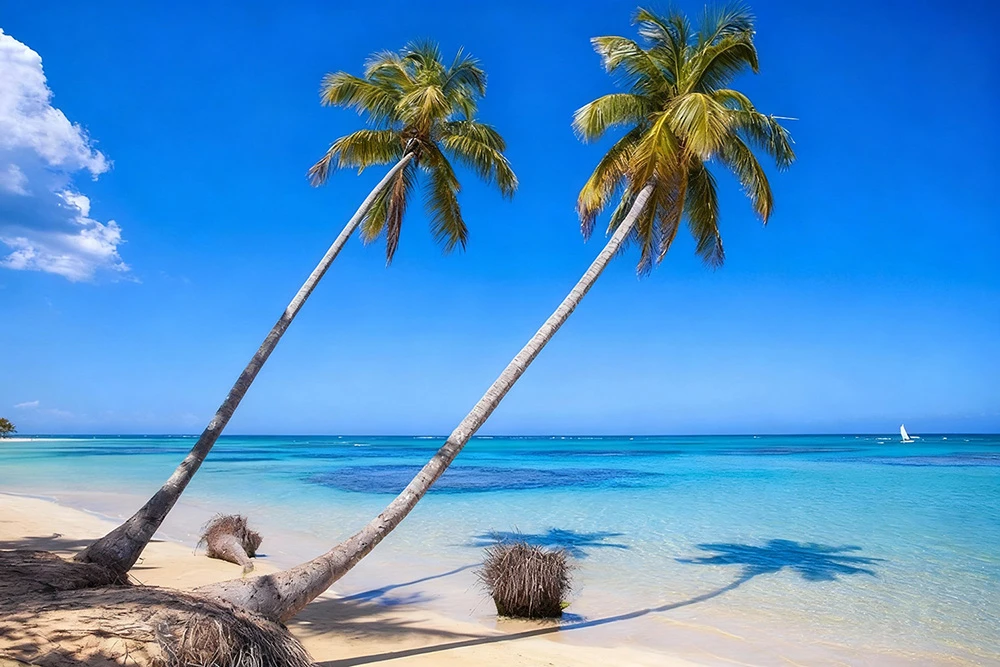
The Sacred Pause of Dominican Noon
Right at noon, it’s like someone turns the whole day to low. La siesta arrives and shutters slide down; shops go dark, traffic slackens to a standstill, and the noise melts away. Ceiling fans hum, domino tiles click on shaded stoops, and lunch hangs in the warm air rice and beans, a little garlic while the street lies still in the sun. There, noon feels sacred.
People laugh that you can spot a true Dominican by how easily they drift off after a full plate of rice, and I believe them; I’ve watched friends fold into brief, perfect naps as if time loosened its collar. At first it surprised me, then it felt like wisdom rest claimed with pride and shared by a whole neighborhood. In Santo Domingo, I learned to honor that hush too, and when the city wakes, the afternoon feels brighter, easier to live in.

Seven meats, one secret simmering in the pot
I still smile at how a bowl of sancocho can hush a room. The steam carries cilantro and garlic, the sweet green of plantain, the earth of yuca, and somewhere beneath it all the rumor of seven meats. In Santo Domingo they joke that naming them scares the luck away, so cooks just shrug and stir, eyes shining with a secret they’ll never confess.
Everyone swears their pot is medicine hangovers, heartbreak, even the sulking sky after days of rain. Once, after a long night, an aunt ladled me a bowl that felt like a small sun in my hands, and I believed her before the first spoonful. Maybe it’s the salt and starch, maybe it’s the way people lean close while you eat, but that stew settles the world like a blanket for the bones, and for a moment the island’s worries simmer down too.

When even a shout can earn a small fine
I remember biting back a quick ¡Carajo! as the afternoon heat melted my patience along with my paleta, and someone joked, careful – they could fine you for that. In Cartagena, there’s this quirky law against public swearing, the kind of rule everyone knows and mostly shrugs off, like a polite sign on a busy door. Still, hearing it made me smile at the thought that words here are treated with a little ceremony, as if the plaza, ringing with vendors’ calls and church bells, deserves gentler syllables.
It’s not fear so much as a shared promise: that the public space we borrow from each other should feel soft on the ears. I grew up with abuelas who measured language the way they measured salt, knowing it could light a dish or ruin it, and that memory stirred as the sea breeze lifted the day. Maybe that’s why compliments land warmer here and laughter carries farther – because everyone understands that words, like pebbles dropped into a fountain, ripple wider than we think.
Night drums and the sleepless heartbeat of Carnaval
The first time I heard the drums, they were so faint I almost mistook them for the wind. The air was warm, crickets kept a steady hush, and the hills sent back a soft thud thud. A neighbor just smiled and said, “That’s the spirits rehearsing for Carnaval,” as if it were the most normal weather report. I remember feeling oddly relieved, suddenly sure that things were in their place.
There’s an easy confidence in that answer, the kind that makes you relax into the dark and the distance. Out here, in the Dominican Republic, the countryside doesn’t fall silent after sunset; it settles into a low rhythm that makes ordinary moments feel bigger. You start to see that celebration isn’t only a date on a calendar but something steady in daily life. The longer you listen, the more you feel invited.
I still think of those nights when the stars were scattered like salt and the dogs answered the beat in sleepy barks. The drums never demanded attention, yet they found you anyway, a soft reminder you weren’t alone. It’s less about believing in ghosts and more about the way people make joy part of daily life, always ready, so even quiet hours don’t feel empty.
The secret fourth eye of Los Tres Ojos
Funny how names set expectations. You hear “The Three Eyes” and think you’ve got it figured out, then the air cools and the echo sharpens and you realize there’s a fourth lake, kept just out of sight. It waits behind a narrow limestone wall, reached only by a small boat, and it feels as if the land kept one last story back for the quiet ones.
People there say the still water can reflect truth, if you dare to meet your own gaze. I remember leaning into that hush, the mineral smell of wet rock and a blue so calm my thoughts stopped fussing. In Santo Domingo, where bright streets carry laughter above, there’s a quieter sense of honesty below a mirror that doesn’t flatter, only clarifies and you leave with the odd comfort of being gently, honestly seen.
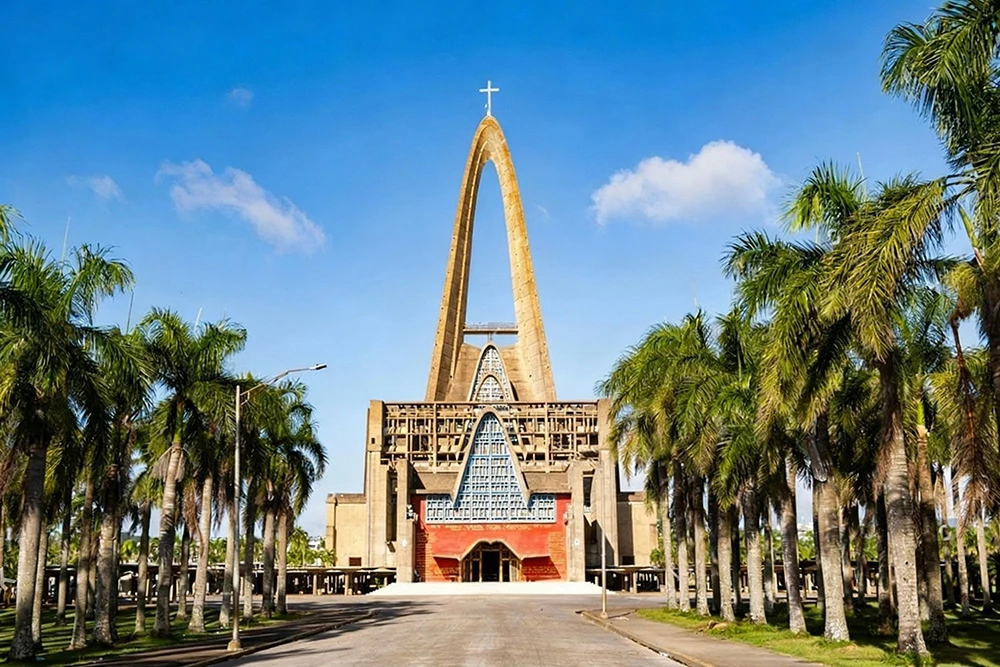
Final thought
In the end, it’s the everyday moments that uncover the soul of the Dominican Republic – the rhythm of voices drifting through warm evening air, the sweetness of fruit shared under the sun, the laughter that rises as easily as the tide. Beneath its beauty, the country moves with a kindness that feels both effortless and deep. It’s a place where joy lives in the details, stitched into every smile and song. And when you leave, it stays with you – a warmth that hums quietly, like sunlight that refuses to fade.
